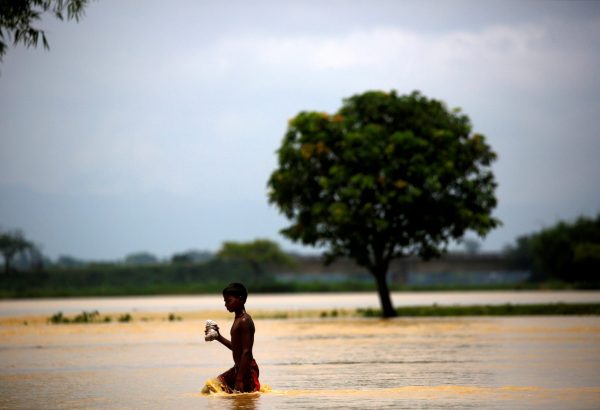The majority of Nepal’s population live nearby water bodies, especially rivers, as this provides access to water for consumption and farming. Despite this land being vulnerable to destruction during natural disasters, its management remains lax. Politicians consistently take advantage of post-disaster chaos by providing land to people, which is a straightforward route for patronage and ensures votes during future elections. Such temporary structures then evolve into permanent ones as people figure out how to pay politicians and land office officials for title deeds.
Nepal’s natural disaster preparedness strategy — or lack thereof — stands in stark contrast to other similarly disaster prone regions. For instance, September 2017 saw hurricanes hit thousands of miles away in the Caribbean and the Americas. There, the discourse around preparedness before a disaster hits is at least as important as that which happens after the disaster strikes. But in Nepal natural disasters are just another way to rent-seek — people use humanitarian crises to make economic gains.
While development partners do pour in millions of dollars into disaster preparedness in Nepal, this funding is often funnelled into projects like conferences, seminars and trainings that have little direct bearing on the crisis that emerges after a disaster strikes. The fact that the Kathmandu Valley, with a population of 5 million people, has less fire trucks than the city of Thimphu in Bhutan with a population of 100,000 speaks volumes about how Nepal perceives and prepares for natural disasters.
Following a natural disaster in Nepal, websites quickly pop up and social media is abuzz seeking contributions towards disaster relief. These are not always legitimate. For instance, a website appealing for money for Nepali victims after the August 2017 floods even used a picture of a flooded street in Bangladesh with people swimming.
There are known members of Nepal’s diaspora community who become very active once disasters strike in Nepal and mobilise funds that never reach the country. There were also Nepali people living in the United States when the April and May 2015 earthquakes struck and worked with lawyers to ensure that they received the Temporary Protected Status visa, despite them not being even remotely impacted by such disasters.
And in international social organisations and service clubs like Rotary and the Lions Club, there are allegations of corruption about who procures materials and where these materials are procured from. Even the Nepali government uses natural disasters as a means to raise money for the Prime Minister Relief Fund without ever being held accountable for how this fund is being utilised. Unfortunately this perpetuates a culture of corruption, meaning that organisations suspect corruption from each other, which in turn tarnishes the reputations of the ones that do genuine work in the wake of disasters.
Social media has also popularised a culture of people using relief work as a photo opportunity rather than focusing on the needs of victims. When Nepali Prime Minister Sher Bahadur Deuba visited flood hit areas in August 2017, he drew criticism because of the garland he wore around his neck. It signalled a political stunt rather than intent to do something concrete. People who went on relief operations continued to post pictures with politicians, acting with little empathy for the people who had been affected.
Natural disasters strike randomly, they do not choose a country. The issue then is how you prepare for these disasters in countries like Nepal where resources are not properly deployed towards initial preparedness that could help in the actual relief efforts.
One way to address this issue is exemplified by Peak Reinsurance, an insurance company based in Hong Kong but working through the Himalayan Consensus Institute on insurance projects that Nepali municipalities can purchase — and actually receive a definitive sum of money — in the event of a natural disaster. This is the sort of preparedness that is effective and will be of substantive value post-disaster. But more innovation is required to shift Nepal’s focus from the natural disaster post-mortem to pre-disaster preparedness.
Sujeev Shakya is Chair of the Nepal Economic Forum. You can follow him on Twitter at @sujeevshakya.

